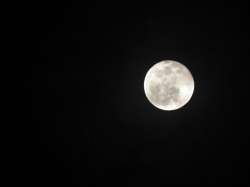China prepares to launch 3 artificial moons in space by 2022
The artificial or man-made moon is a satellite carrying a huge space mirror, which can reflect the sun light to the Earth.

China is preparing to launch three artificial moons in space in 2022, the state-run Science and Technology Daily reported.
The artificial or man-made moon is a satellite carrying a huge space mirror, which can reflect the sun light to the Earth.
According to plans, the verification of launch, orbit injection, unfolding, illumination, adjust and control of the man-made moon will be completed by 2020, the daily reported, quoting Wu Chunfeng, head of Tianfu New District System Science Research Institute in Chengdu in China's southwest Sichuan province.
Three man-made moons will be launched in 2022, it said.
"By then, the three huge mirrors will divide the 360-degree orbital plane, realising illuminating an area for 24 hours continuously," Wu said.
The reflected sun light can cover an area of 3,600 sq km to 6,400 sq km, and the illumination intensity is expected to be eight times of the moon light, he said.
The moon orbits the Earth about 380,000 km from the Earth, while the man-made moon is expected to be put on an orbit within 500 km from the Earth, the state-run China Daily reported.
About concerns that the man-made moonlight will interrupt the normal day-night cycle of animals and plants, Wu said the light intensity and illumination time can be adjusted and the accuracy of illumination can be controlled within scores of meters. When a man-made moon is orbiting, people can only see a bright star in the sky.
Man-made moon is especially useful in civil area.
"Using man-made moon to illuminate an area 50 sq km can save 1.2 billion yuan of electric charge," Wu said. "It can also illuminate blackout areas when natural disasters such as earthquake happen."
The US and Russia have explored man-made moon, hoping it can bring convenience to night-time activities.
In the 1990s, Russia carried out an experiment called Banner, testing the idea of using a mirror to reflect the sun light to Earth. The mirror failed to unfold in space and the experiment was halted.
"China, Russia, the US, Japan and the EU are all striving to make technological breakthroughs on space energy application," Wu said.